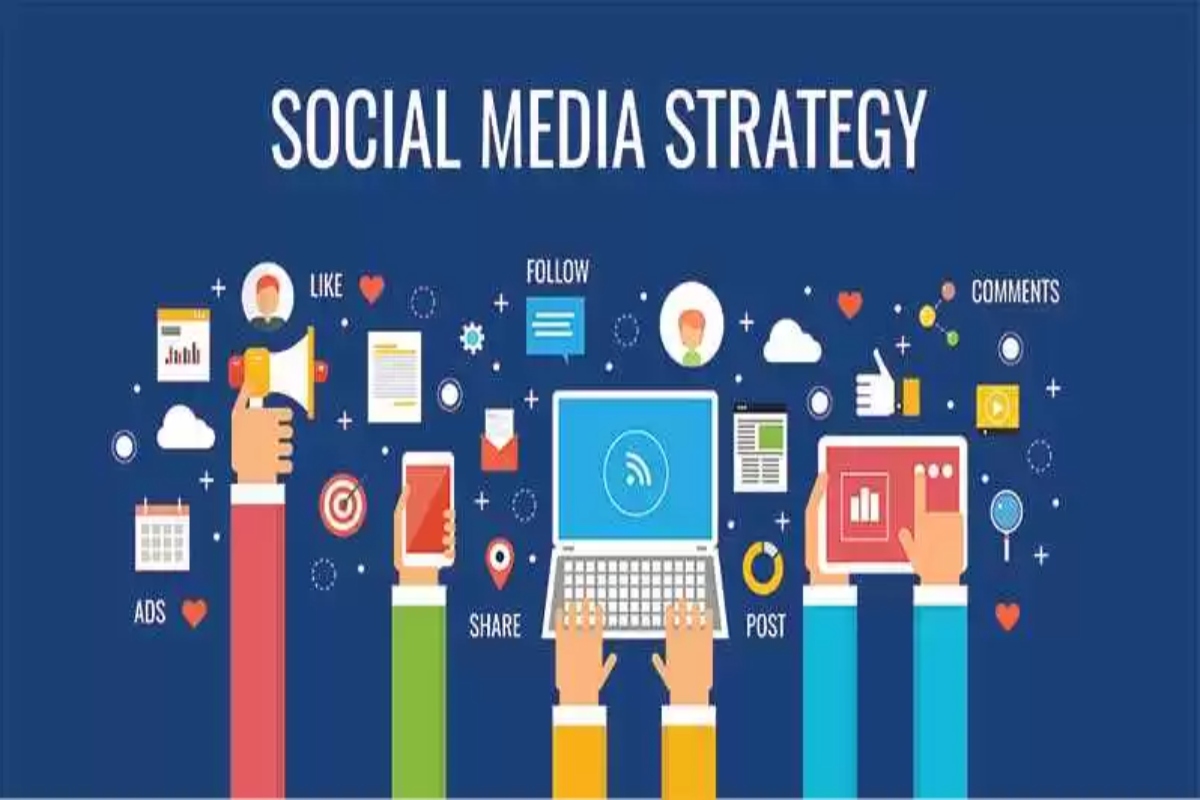We can explain the Role of Social Media in Web Development social media has radically changed the way consumers can interact with content. Thus, after social media, consumers want a fairly similar, intuitive, and interactive experience on the websites they visit.
This has led to a shift in how “good web design” is defined and hence how websites are now designed.
The Role of Social Media in Web Development

There is an important and significant role in the impact of social networking in the large development of the web, and we are going to Role of Social Media in Web Development in the following points:
Social Participation Icons
You have to know that before knowing The Role of Social Media in Web Development, that before social media, the vision of the brand and the building of the link was the field of online directories, forums, the creation of customer attraction magnets, paid strategies, direct blogging, etc.
Now, social media has become one of the most important platforms to raise brand awareness, generate qualified traffic, and engage consumers.
As a result, social engagement icons have played a prominent role in website design. Properly positioning social participation icons and designing the same social posts can affect participation and the number of visits that qualify for your social media pages.
Interactive design of social media pages

In the advent of social media, website design limited how consumers accessed content and how they interacted with others. Social media has revolutionized how to access, consume, and share content and how people interact with each other.
This has affected how consumers perceive and judge business. People expect a similar kind of content, interaction, and experience when they visit other websites. Thus, you need to focus on creating a high-quality design for your social media pages.
You have to create social profiles that attract your target audience’s attention, attract them to your content, link them to your message, and make it easier for them to find and follow more information about your work.
If your social media pages do not provide the same level of interaction, do not provide relevant information or content, or make it difficult to pursue your business, you will lose valuable potential customers.
Scroll and Pull
In the advent of social media, long content often constituted an incubator for ads that appeared on the page exaggeratedly, and therefore a bad experience for the user. Hence, the design of the long pages became a boon for visitors because it meant that they had to consume or exceed a great deal of content before they could access the subject’s core.
In addition, the scroll was seen as the site’s failure to easily communicate its message to the visitor. As a result, websites are designed to divide content into parts and thus into multiple pages.
More visual content is needed
In the advent of social media, visual content (high-resolution and unique images and videos) was rarely seen as an essential component to attract visitors. Stored images were easily used on website pages and in shared content.
Increased user interaction
In the advent of social media, consumers relied on how the website regulated content and allowed interaction with that content. As a result, consumers did not have a uniform and unified “sense” of what a good user experience and interaction meant. Thus, content regulation, page design, and mobility were primarily the company’s prerogative.
Social media has made access to information very easy. Simple listings, content cards, intuitive interaction with content, and the quick availability of multiple forms of content have made seamless interaction with content a prime expectation on any other website.
Now web design should focus more on displaying not just content but also controls that can be used to access content available on the site. This puts a great deal of emphasis on the navigation part design, how to arrange lists and how to classify each list with other subheadings.
Unobtrusive Ads
In the advent of social media, website designs could have remained easily ad-friendly and leveraged their useful content to display ads on the page and use intrusive ads.
After social media, website designers can no longer prioritize advertising but should instead prioritize user experience on their pages. Social media platforms (Facebook, Instagram, Pinterest, Twitter, etc.) are designed to be used effectively on smartphones.
The way ads are displayed on these platforms has fundamentally changed the way consumers expect to see ads on any commercial website. As a result, annoying traditional ads only increase bounce rates, forcing the site to focus more on designs that put content first and ads second.
Responsive site design

Facebook reports that an average of 1.908 billion users used its mobile or desktop platform daily. Facebook, along with other social media platforms, meets its users’ mobile needs by customizing their apps so that their content is always displayed without compromising the interaction or user experience as they move between devices.
They achieve this through a responsive web design. The responsive website uses flexible mesh systems that allow them to sense the size of the device’s screen and adjust its size and content automatically so that the user can easily interact with it.
As a result, social media customers expect websites to be responsive, automatically sensing and adapting to their device’s screen size, thus providing them with a seamless user experience across devices.
Current digital age
In the current digital age, there is always something or someone else appearing online that has less or more influence on web design. If we talk about users, they’re always looking for something to communicate with them. So the best way to present this to them is to create your website in a way that reflects the overall social media experience. With the right and influential strategy, comprehensive search about different social media channels, and the right amount of skill, you can certainly turn your website into one that can be quickly and easily combined with other forms of media. That’s all you need to know about The Role of Social Media in Web Development.
We explain in this article The Role of Social Media in Web Development, but if you need any other help, you can contact us now.

